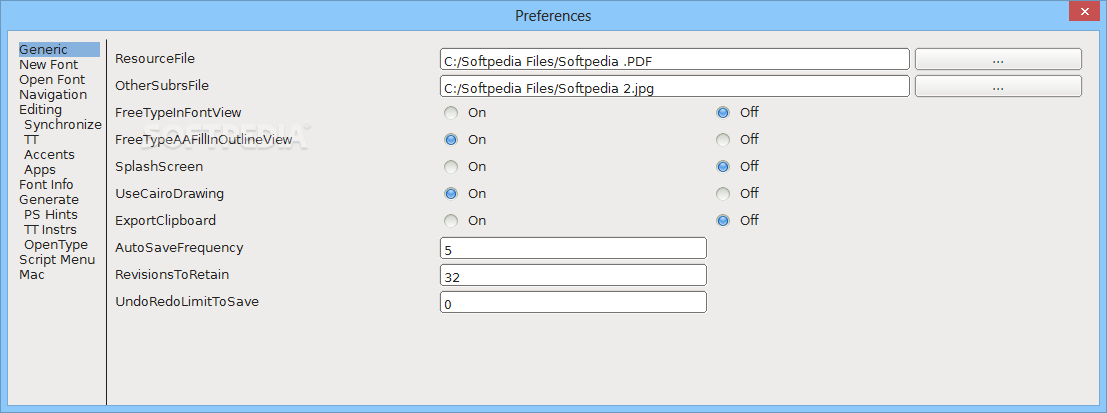

My initial thought for creating a EOT file was to download WEFT from the Microsoft website and use that via WINE. As WOFF is only going to be supported in Microsoft Internet Explorer 9 and later, for a site to work on Microsoft Internet Explorer 4-8 I’d need to create a EOT file. An EOT file does exactly the same job as a WOFF file on Microsoft browsers. SVG font created sucessfully there was one more format I needed to create – a Microsoft EOT file. All seemed to work well in Firefox 3.6 when I tested the resulting. After creating my WOFF file, I could then incorporate it into a web page using the CSS declaration.
#Fontforge la how to
The tool I needed to run to convert font files to WOFF files is called sfnt2woff and I found some very good instructions on how to run and use this tool on Federico Moretti’s blog.
#Fontforge la windows
WINE is a compatibility layer that allows you to run binary files intended for use on Microsoft Windows on GNU/Linux. Sadly, the simplest way to do this on GNU/Linux was download a windows binary file (an. In addition, a WOFF file can contain only a subset of the characters or glyphs in a font that you actually use on your site which again can save a lot of download time on a site that uses several fonts. For instance a WOFF file is compressed, which saves download time. There are many reasons that you would want to use a WOFF file for font embedding rather than have your web-page link to your original font file. Once I’d decided on a font, the next job was to create a WOFF file from Anchor. The issues are explained very well in this article by Armand Niculescu. In order to be able to embed a font on a website you have to have a licence to do this. This is because there are a number of irritating legal issues around font embedding for web pages. I decided I’d create a very simple web-page using one of my own fonts, Anchor. So, being as curious and nosey as ever I thought I would investigate using WOFF.īut where to start? It turned out that from deciding to create a web-page using WOFF to the finished article took me the best part of a day of messing around, browsing, compiling tarballs and experimenting. Mozilla Firefox 3.6 includes a support for a very similar system to WEFT for embedding fonts on web pages. Over a decade later I was reading the press release for Mozilla Firefox 3.6 and noticed that font embedding was about to re-enter the limelight. As someone who suffers from projectile vomiting at the merest glance of Comic Sans I immediately put trying out WEFT on my to-do list. This meant they were not restricted to using the fonts someone had installed on their computer, but could use any font you wanted. WEFT allowed you to embed fonts on your websites. One of the things I remember reading about on the site was a tool called WEFT (Web Embedding Fonts Tool).

Twelve years ago, when the internet was all shiny and new and I hadn’t even heard of GNU/Linux, one of my favourite websites was the Microsoft typography website.


 0 kommentar(er)
0 kommentar(er)
